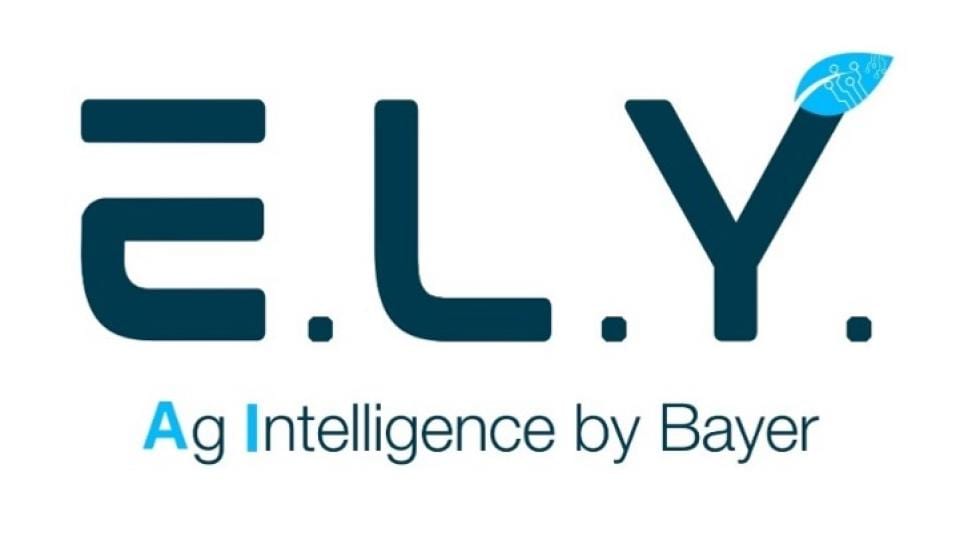From Magic Spells to Precision Medicine: The History of Cancer Care

Cancer remains one of our biggest burdens, how we have battled it reflects how far our medical understanding has come.
Cancer is the second leading cause of death on the planet today, a disease that affects more than 32 million people globally1 and one that is predicted to grow by as much 70% in the next 20 years2. Its insidious rise over the past century is why cancer is often considered a relatively new disease. A result of our modern industrial world.
This is far from the case – scientists have found evidence of cancer over a million years old. A tumor found in the foot bone of an ancient South African has been dated to at least 1.7 million years ago. As Siddhartha Mukherjee said in his book ‘The Emperor of all Maladies’, “Civilization did not cause cancer, but by extending human life spans, civilization unveiled it.”
And how we’ve treated the disease has radically changed over time, evolving with our understanding of how the human body works. The history of combating cancer is one of employing the latest medical advancements of the time. And we are now entering potentially the most exciting stage in this long fight.
But let’s start from the beginning.
Cancer in the Ancient World
The first recorded case of cancer was in ancient Egypt. It was found in the Edwin Smith Papyrus3, the world's oldest known surgical document dated around 1600BC. It contains a reference to breast cancer, describing bulging ball-like tumors on the chest that are cold to touch. As for a treatment, the scrolls speak of using a ‘fire-stick’ to burn, or cauterize, unidentified tumors.
It was Hippocrates (460‐360BC)4 the father of medicine, who first gave a name to these tumors. He uses the word karkinos (Greek for crab) to describe ulcerating and non‐healing lumps and karkinoma for malignant tumors. The naming is believed to stem from the hardness of a tumorous lump combined with the swollen blood vessels around it resembling crab’s legs.
Hippocrates believed that an imbalance of the main four body fluids or humours (blood, phlegm, and yellow and black bile) caused diseases. For cancer, he blamed an overconcentration of black bile in the flesh and suggested diet, rest, and exercise to address this imbalance. If this did not work, he advocated purges and sometimes surgery if the carcinoma was not too ‘deep-seated’.
Hippocrates’ black bile theory passed from ancient Greece to ancient Rome and into the writings of perhaps his most prominent successor, Galen of Pergamum (129 – 216CE)5. Galen’s classification of tumors and view on the causes of cancer influenced physicians for more than 1,500 years. He also used the word oncos (Greek for mass or swelling) to describe tumors, which is why we call the study and treatment of cancer oncology.
From the Middle Ages to the Modern Age
After the fall of the Roman Empire, many of the learnings of Hippocrates and Galen were left behind with medieval medicine – a mix of local folklore, herbalism and religious dogmas that preached the use of faith healing and miracles over surgery.
While black bile was still seen as the primary cause of cancer, treatments often took the form of strange concoctions. From ointments made of frogs’ oil to potions containing herbs, powdered crab and even a wolf’s tongue.
This changed with the advent of the renaissance and the invention of the Gutenberg printing press in 1450. The great medical works of Greece, Rome and Arabia could now be translated and distributed throughout Europe. Together with the observations and detailed anatomical drawings of Antonio Benivieni (1443–1502), Michelangelo (1475–1564) and Andreas Vesalius (1514-1564), they helped transform our understanding of human anatomy and in turn our approach to surgery.
By the start of the 17th century, the ‘father of German surgery’ Wilhelm Fabricius6 was publishing detailed accounts of his methods, including extensive operations on cancers. And over the next 200 years, this clinical approach to medicine became increasingly the norm. Out went black bile theory and barber surgeons and in came scientific observation, clinical data and pathological case studies.
The 19th century was the golden age of surgery with disinfection and sterilization becoming increasingly commonplace and in 1846, William Morton7 successfully demonstrated the use of anaesthesia for surgery. This enabled pioneering surgeons like William Halsted to carry out increasingly radical surgeries on cancers, such as mastectomies, to prevent spreading.
In parallel, the microscopic study of tumors helped us edge ever closer to understanding the origins of cancer. Scientists such as Johannes Müller (1801–1858) and Robert Remak (1815–1865) noted that cancer were composed of particular types of cell and that metastasis was due to spread of these cells.
All Change in the 20th Century
In November 1895, the German physics professor Wilhelm Röntgen discovered X-rays. Within months, hospitals around the world had started acquiring and using the imaging apparatus for diagnosis. They found that the radiation caused by these rays could actually treat several skin conditions and by the turn of the century, X-rays were increasingly being used to treat cancers8.
Radiotherapy as a treatment for cancer had emerged. But the benefits of this technique were being outweighed by the side effects - radiation itself could cause cancer. Over the next fifty years, scientists began to understand the nature of radiation, its effect on cells and how it could be used more safely. And by the end of the 20th century, advances in computer technology and radiation physics have enabled scientists to accurately map the location and shape of small tumors and then precisely aim radiation beams at it, altering the intensity and dosage to deliver the best results. In addition, today newer forms of radiation-emitting drugs are being developed that can deliver high-energy radiation to a cancerous cell while minimizing damage to the surrounding tissue.
Alongside surgery and radiotherapy, the 20th century had another string to its bow in the battle against cancer - anti-cancer drugs, or chemotherapy. The first of which was nitrogen mustard, more commonly known as mustard gas, the poisonous gas used to devastating effect in the trenches of WW1.
During the second world war, the US Army discovered that one of the key effects on exposed soldiers was decreased numbers of white blood cells (lymphocytes) . Whilst seeking protective measures they found that nitrogen mustard was actually effective in treating cancer of the lymph nodes (lymphoma) as it attacked those particular cells.
This served as the model for the chemotherapy drugs that rapidly followed. The race was on to develop other drugs that could target cells at different phases of the cell cycle. Because cancer cells tend to form new cells more quickly than normal cells, chemotherapy drugs are good at targeting the spread of cancer. But as they can’t differentiate between healthy cells and cancerous ones, they can cause significant side effects.
It is why in the second half of the 20th century, oncologists focused on adjuvant therapy, combining treatments to both remove the tumor and destroy any remaining cancer cells.
A Precision Future
While surgery, radiation and chemotherapy remain the principle weapons against cancer, recent advances in our knowledge of the molecular drivers of cancer are transforming our approach.
We now know that cancer is highly differentiated – comprising hundreds of different types - and impacts every patient differently, often changing during the course of the disease. Genomic testing helps to identify the DNA alterations that drive the growth of a cancerous tumor. By understanding this, doctors and researchers may be able to more accurately predict which treatments will work in which specific groups of cancer patients.
Screenings, early diagnostics and genomic cancer testing have become increasingly important to successful therapy, enabling oncologists to utilise a growing array of treatments to more precisely target a patient’s particular tumor.
From tailored treatments targeting specific signaling pathways in the cell or specific structures on the cell surface to activating the body’s own immune system – the future of cancer treatment is about finding the optimal care for each individual patient. It has come a long way from purgatives and potions.
1 More than 32 million people globally were living with cancer in 2012, The Cancer Atlas, http://canceratlas.cancer.org/the-burden/cancer-survivorship/
2 Stewart, B. et al. World Cancer Report 2014, WHO, https://www.drugsandalcohol.ie/28525/1/World%20Cancer%20Report.pdf
3 Breasted J. The Edwin Smith Surgical Papyrus, University of Chicago, https://oi.uchicago.edu/sites/oi.uchicago.edu/files/uploads/shared/docs
4 Tsoucalas G, et al. Hippocrates on nasal cancer, History of Oncology, University of Thessaly, https://pdfs.semanticscholar.org/5c46/05c9471d1b3ba1436e37771fa13a44d40…
5 Papavramidou, N, et al. Ancient Greek and Greco–Roman Methods in Modern Surgical Treatment of Cancer, https://www.ncbi.nlm.nih.gov/pmc/articles/PMC2820670/
6 The history of cancer in the College collections, Royal College of Physicians of Edinburgh, https://www.rcpe.ac.uk/heritage/history-cancer-college-collections
7 History of Anesthesia, Wood Library-Museum of Anesthesiology,
https://www.woodlibrarymuseum.org/history-of-anesthesia/
8 Evolution of Cancer Treatments: Radiation, The American Cancer Society, https://www.cancer.org/cancer/cancer-basics/history-of-cancer/cancer-treatment-radiation.html
9 Faguet G, A brief history of cancer,
https://onlinelibrary.wiley.com/doi/full/10.1002/ijc.29134
10 About rare cancers, Cancer Research UK,
https://www.cancerresearchuk.org/about-cancer/rare-cancers/what-rare-cancers-are




















